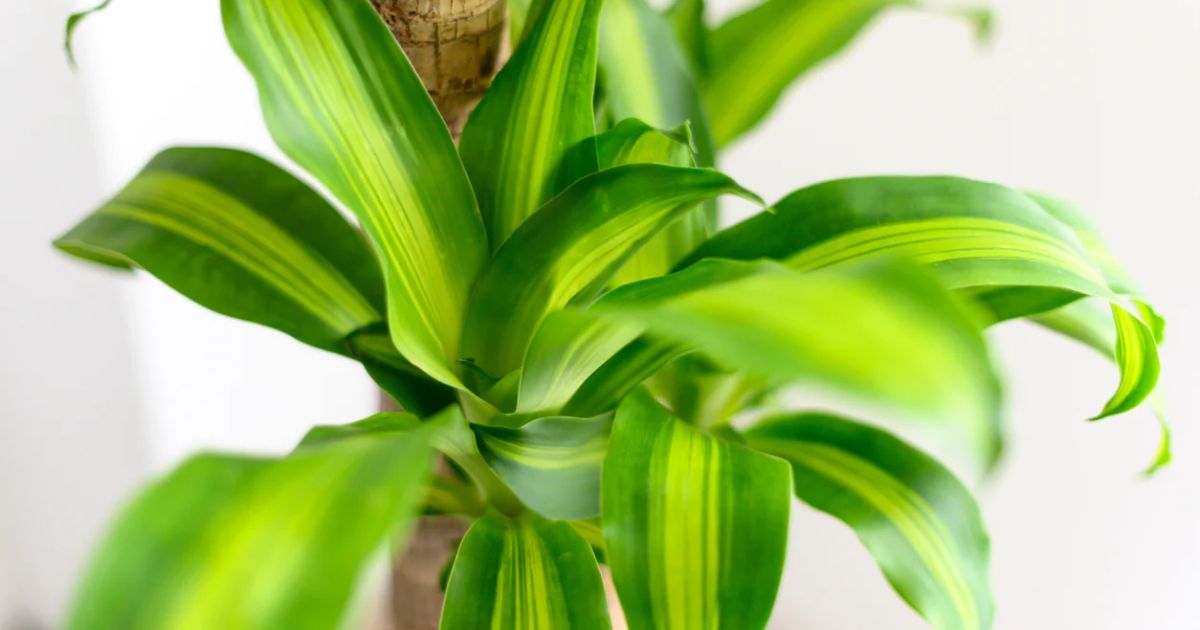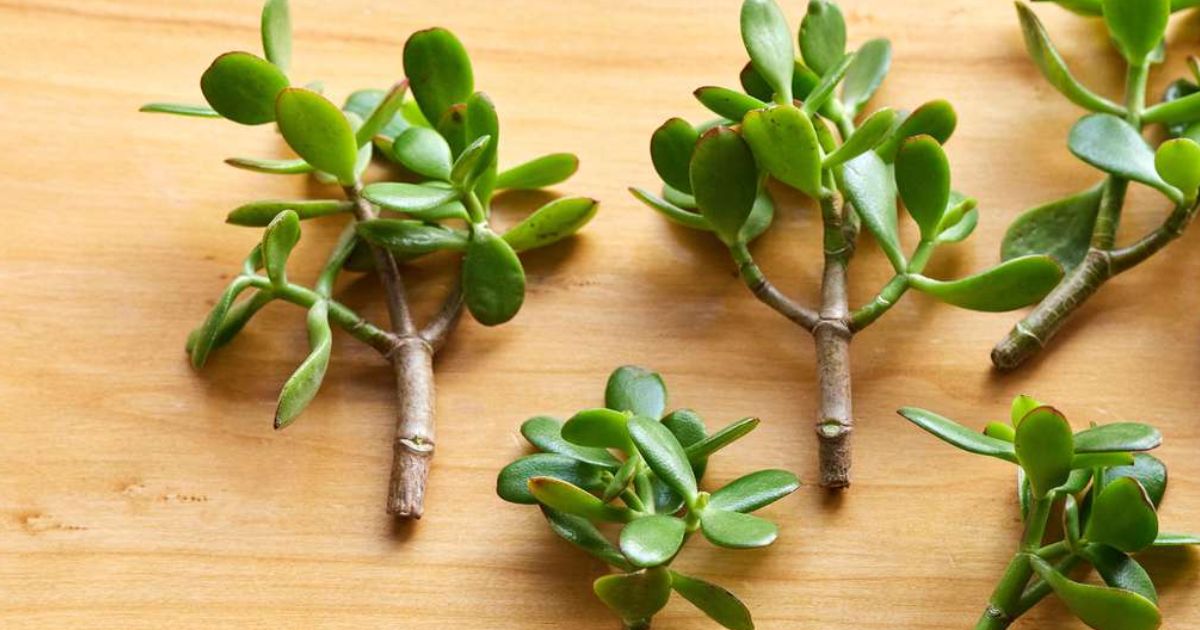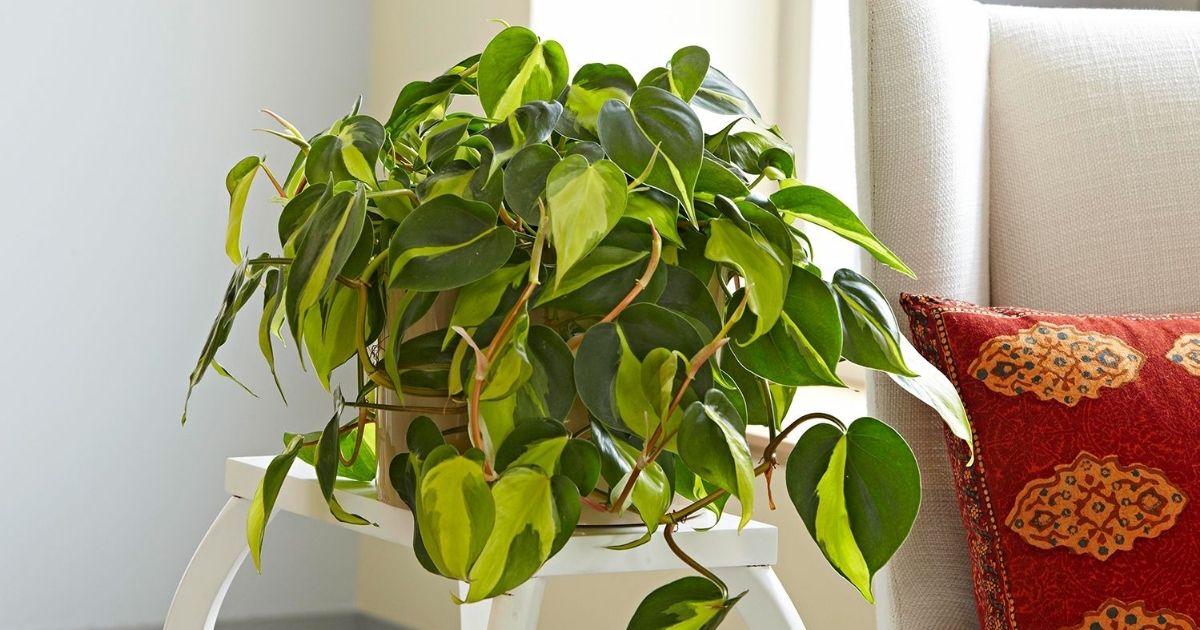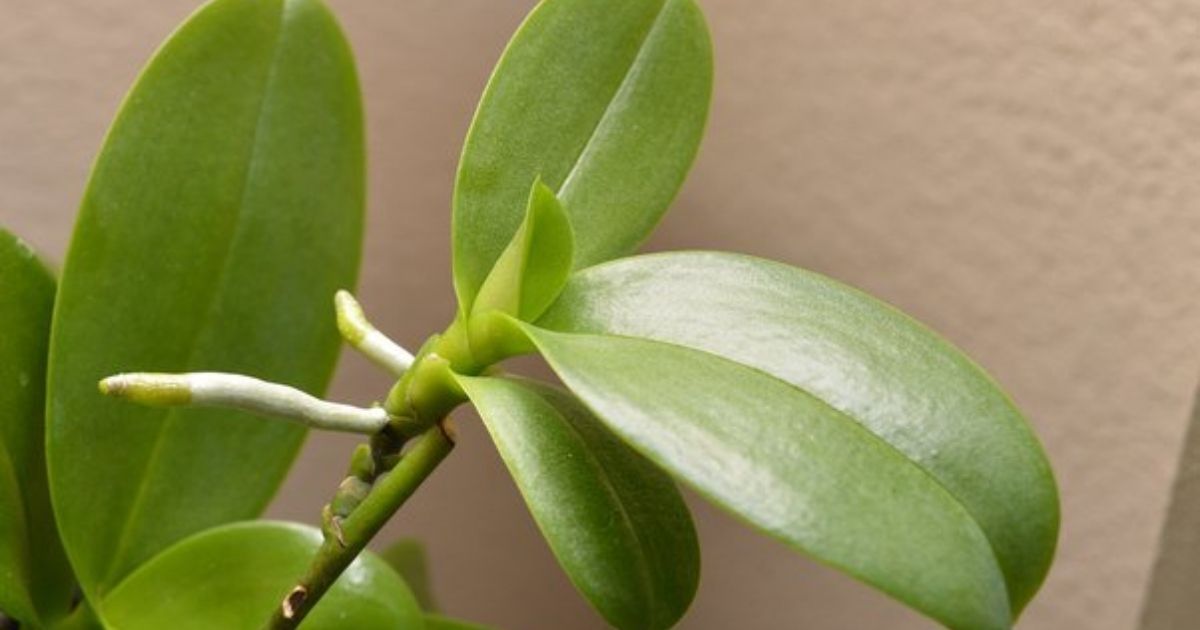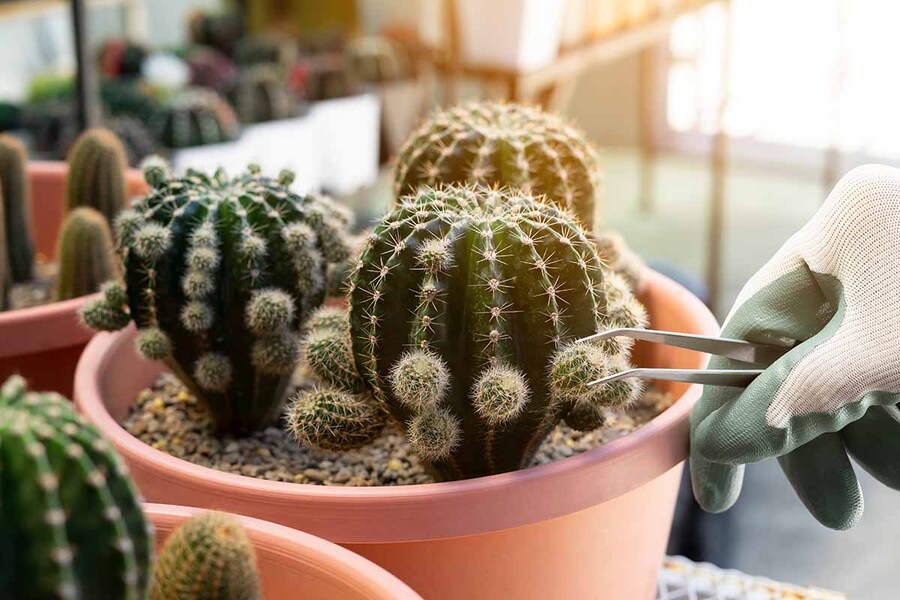How To Lower Humidity In Grow Tent In 5 Methods: Guide For Beginners
Have you ever been stuck in a situation where the humidity in your grow tent is too high?
High humidity levels can cause slow growth, bud rot, fungal growth, mildew, and mold. These factors threaten your plants' survival and chances of high yields. Your grow tent shouldn't exceed 70% humidity. So how to lower humidity in grow tent?
In this discussion, we will provide some basic tips on how to lower humidity in a grow tent without spending much money.
Table of Contents
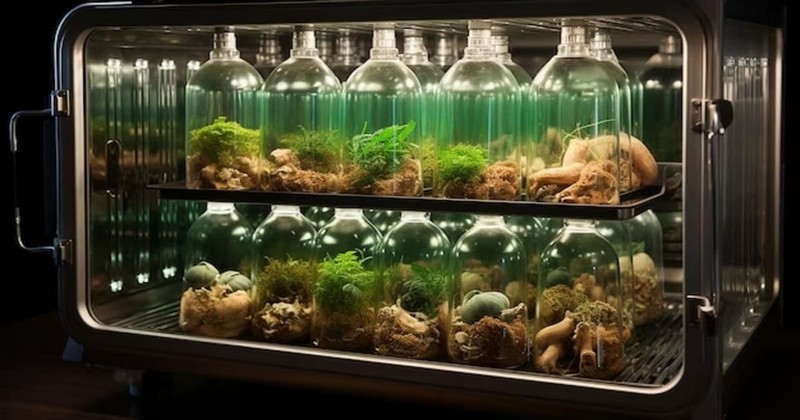
Why Should You Control Temperature & Humidity For Growing?
Controlling temperature and humidity is crucial for successful plant growth indoors. Here's why:
- Different plant species thrive in specific temperature and humidity ranges. Proper control simulates their natural environment, promoting healthy growth and maximising yield.
- Temperature and humidity affect how plants take in water. In the ideal environment, between 70-75°F, they can efficiently absorb water and nutrients.
- If you raise the humidity in the grow tent too much, mildew and mold will grow, harming your plants. Maintaining the correct balance helps prevent these issues.
- Ideal conditions often change throughout a plant's life cycle. Seedlings typically require higher humidity, while mature plants may need lower levels.
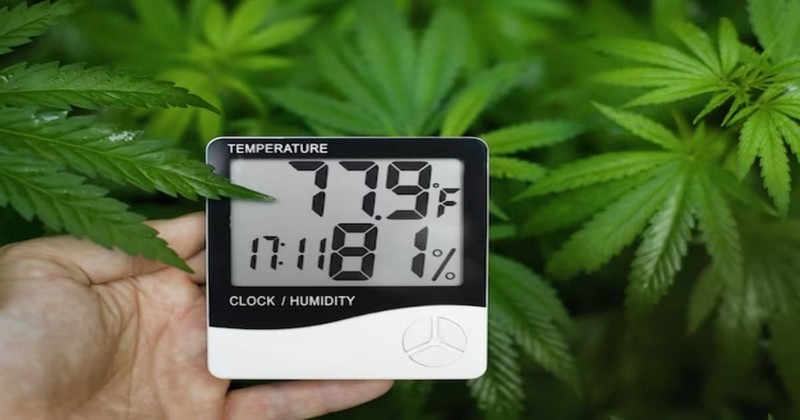
Grow Room Temperature In Grow Tent
It is important to monitor temperature to control humidity in your grow room. To do so, you should have a thermometer and hygrometer.
- For clones or seedlings, maintain the temperature between 74-78°F (23 and 26°C).
- Vegetative plants can thrive at 70°F (21°C).
- Flowering plants require temperatures ranging from 75-88°F (24-31°C). However, plants ready for harvest prefer a cooler temperature of 65-74°F (18-24°C).
Generally, the ideal temperature range is generally between 77-86°F (25-30°C). Temperatures above 86°F (30°C) can cause heat stress and reduce growth rate. You can see the image below:
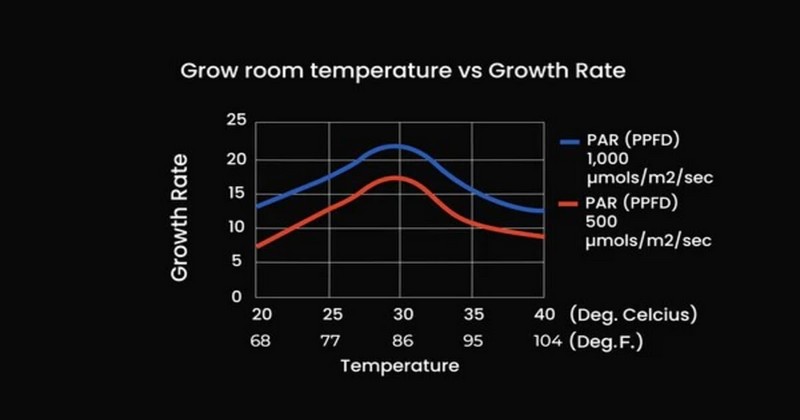
Maintaining a temperature above 50°F (12°C) during the night is important to prevent cold shock, which can stunt growth or cause the plants to die.
However, keep in mind that different plants require various humidity levels.
See more: how to make a hydroponic garden
Humidity Level In Grow Tent
Humidity is the amount of water moisture present in the air. Low humidity levels (under 30%) can make your plants lose water, while high levels (above 75%) can lead to microbial and fungal pathogens, resulting in mold and bud rot.
Relative humidity is used as a percentage and shows the current state of absolute humidity compared to the maximum humidity at the same temperature. For example:
- Seedlings or clones require 70% to 75% humidity to allow their root systems to grow, which means they rely on their leaves to absorb water. Indoor growers use propagation trays or humidity domes to build moisture.
- Vegetative plants require 50% to 70% humidity as they can take up water from their roots and leaves.
- Flowering plants require 40% to 50% humidity to create a comfortable breathing environment.
- Harvesting in grow tents typically requires 45% to 50% humidity to ensure the environment is not too humid.
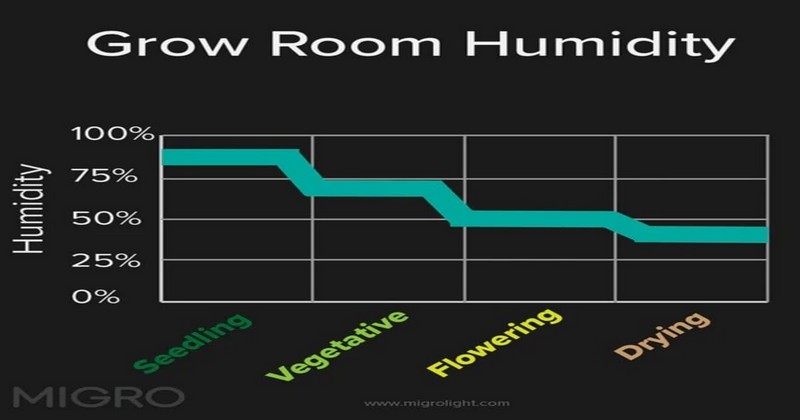
Image via Migrolight
See more: carbon filters hydroponics.
How To Lower Humidity In Grow Tent In 5 Methods
The good news is that how to lower humidity in grow tent is not as difficult as you might expect. But some methods require money. To further understand more about these methods, check below:
Get A Dehumidifier
The machine that can easily remove moisture from the air would be a great invention, right? Such a machine exists and can be found at your local drug store or home improvement store.
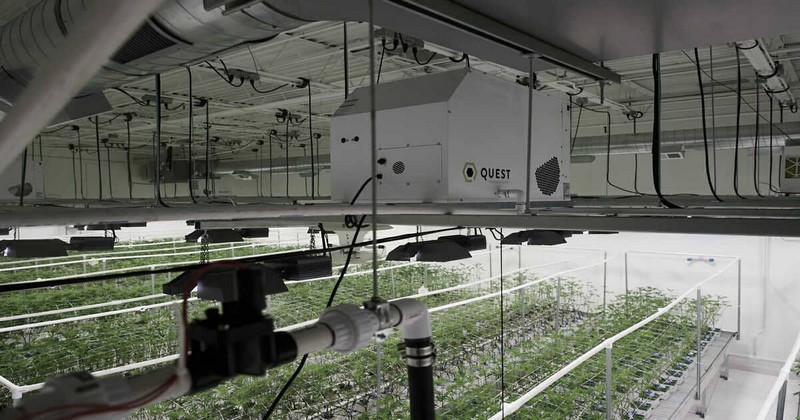
A dehumidifier is the easiest solution to humidity issues, but it may be costly if you have a large tent or a bigger room.
Commercial Grade Dehumidifiers
If you have a large operation or grow plants for commercial purposes, invest in a commercial-grade dehumidifier. Although small dehumidifiers are perfect for small tents or hobby growers, they do not provide control over humidity levels.
The Quest 70 Overhead Dehumidifier from Benchmark Hydroponics is the best choice. Quest dehumidifiers will efficiently control humidity from germination to harvest, maintaining a growing environment that's important to the success of indoor and hydroponic gardening.
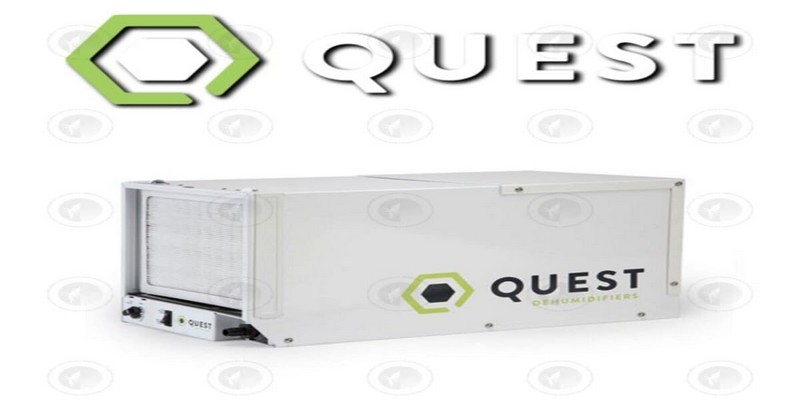
Ventilate Your Grow Tent
Bringing fresh air from outside can help reduce humidity if you're growing plants in a tent. However, this will also mean you'll exhaust air from the tent. In small tents, you can simply blow air out of the tent, and the negative pressure will automatically suck new air in.
To do this, you'll need a good inline fan. For larger tents, or to avoid tent suck, you'll need a second inline fan to blow fresh air back into the tent.
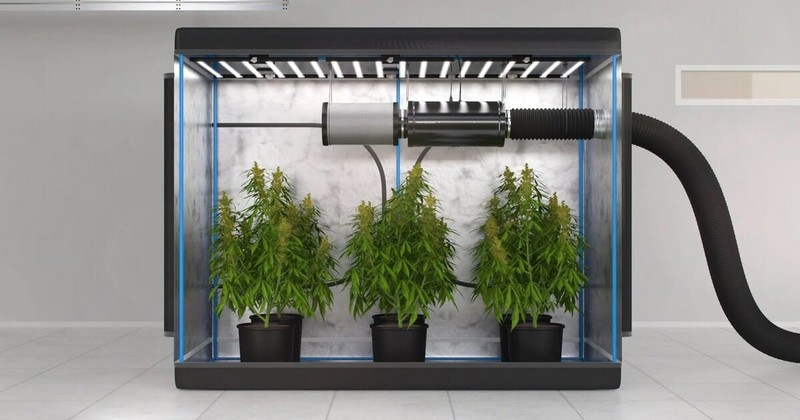
If humidity is a major issue, you can set up an exhaust fan down low because humid air is heavier than dry air. However, if the temperature is not a big problem, it is better to put the fan at the top of the tent where hot air gathers.
To increase circulation among the plants, you can keep more space between them by moving them further apart and trimming off the lower branches of each plant. This action will give the air more room to flow, and the lower branches don't provide buds anyway, resulting in a better harvest.
Remember to use only the best weed-trimming scissors for clean cuts.
See more: carbon filters hydroponics.
Do Not Water More Than Necessary
Providing too much water, especially with poor drainage, can cause nutrient imbalances and root rot, making your plants sick and anemic. Additionally, excess water can increase humidity levels in the air.
Many advanced growers advise watering your plants until the soil is well-saturated and then allowing it to dry out before watering again. You should check whether your plant is underwatered or not via the image below:
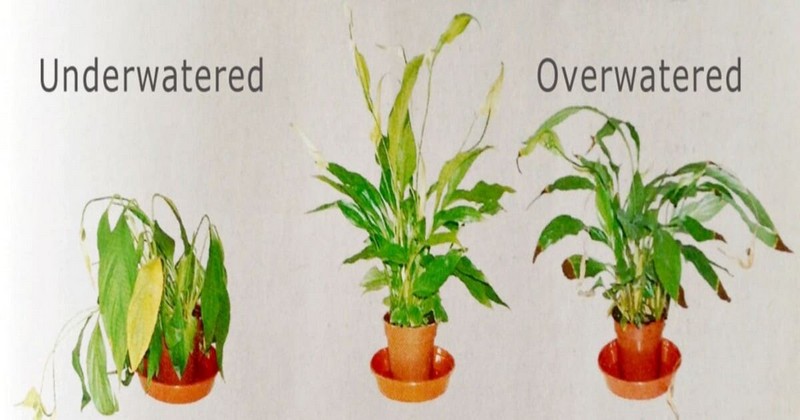
If you have enough soil and proper drainage with semi-average size growing containers, watering your plants every 2-3 days is usually sufficient. The key is to avoid over-saturating the soil when it is already moist.
A good rule of thumb is to water less, but water well. This means completely saturating your plants infrequently instead of lightly watering them frequently.
See more: 7 Best LED Grow Lights In Australia (2024 Highest Review)
Lower Grow Room Temperatures
Relative humidity and temperature are closely related. If the temperature is higher than the ideal level (70-75°F during the day and 60-70°F at night), it is acceptable as long as the humidity is lower. On the other hand, if humidity is higher than the ideal level, lowering the temperature can help offset the problem.
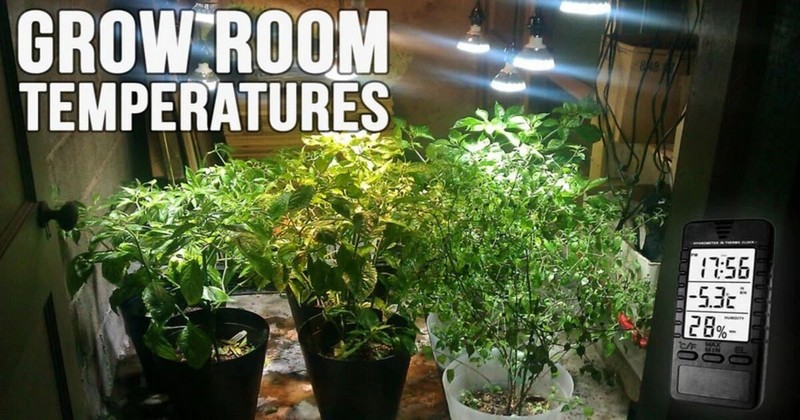
However, relying solely on lowering temperature to solve high humidity levels is not recommended. It is always better to address the root causes by lowering humidity levels.
If high temperature is the reason for high humidity levels, then you should lower the temperature in your grow tent to solve the problem.
Consider An Air Conditioner
An air conditioning unit is a simple way to reduce temperatures and lower the humidity in the air. You can find standalone units or ones with rollers that don't require wall mounting, making them ideal for use in tents.
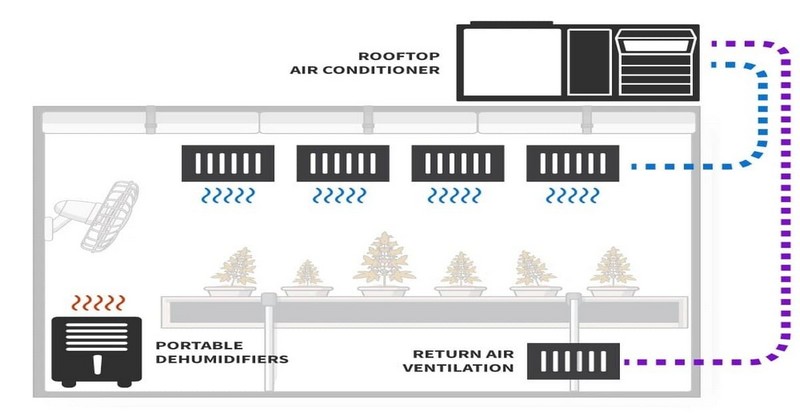
Just make sure to lead the exhaust tube out through an opening in the tent. By cooling and circulating the air, its ability to hold water decreases. This means that colder air can hold less water than warmer air.
See more: 7 Types Of Hydroponics Systems (Expert Explained)
Final Thoughts
It is important to maintain different humidity levels during the various stages of growing plants. Higher humidity levels are beneficial during the vegetative stage, but during the flowering stage, especially in the latter stages, it is essential to reduce the moisture in the air. Neglecting to do so can lead to a poor harvest or even a completely ruined one.
How to lower humidity in grow tent is not as complicated as you might think. The most effective ones are proper ventilation and airflow. It is equally important to keep the temperature under control.
Frequently Asked Questions
How Do I Lower The Humidity In My Tent?
There are 5 steps:
- Use a dehumidifier inside your grow tent.
- Prevent overwatering your plants.
- Check the Plant Density to Improve Ventilation.
- Remove Stagnant Water.
- Enhance Ventilation with Inline Fans.
Is 70 Humidity Too High?
According to research conducted by the Building Science Corporation, if the humidity level of a surface is 70% or above, it can cause significant damage to the property.
The relative humidity level indoors should be between 40% and 70%. However, some experts recommend maintaining a healthy indoor environment of 30% to 60%.
How Do I Lower The Humidity In My Dry Room?
There are some ways to lower the humidity in your dry room:
- Open windows or doors regularly.
- Turn on the AC.
- Use a fan.
- Run exhaust fans in humid areas.
- Dehumidify with plants.
- Absorb moisture with baking soda.
- Keep all surfaces dry.
- Buy moisture absorbers.
